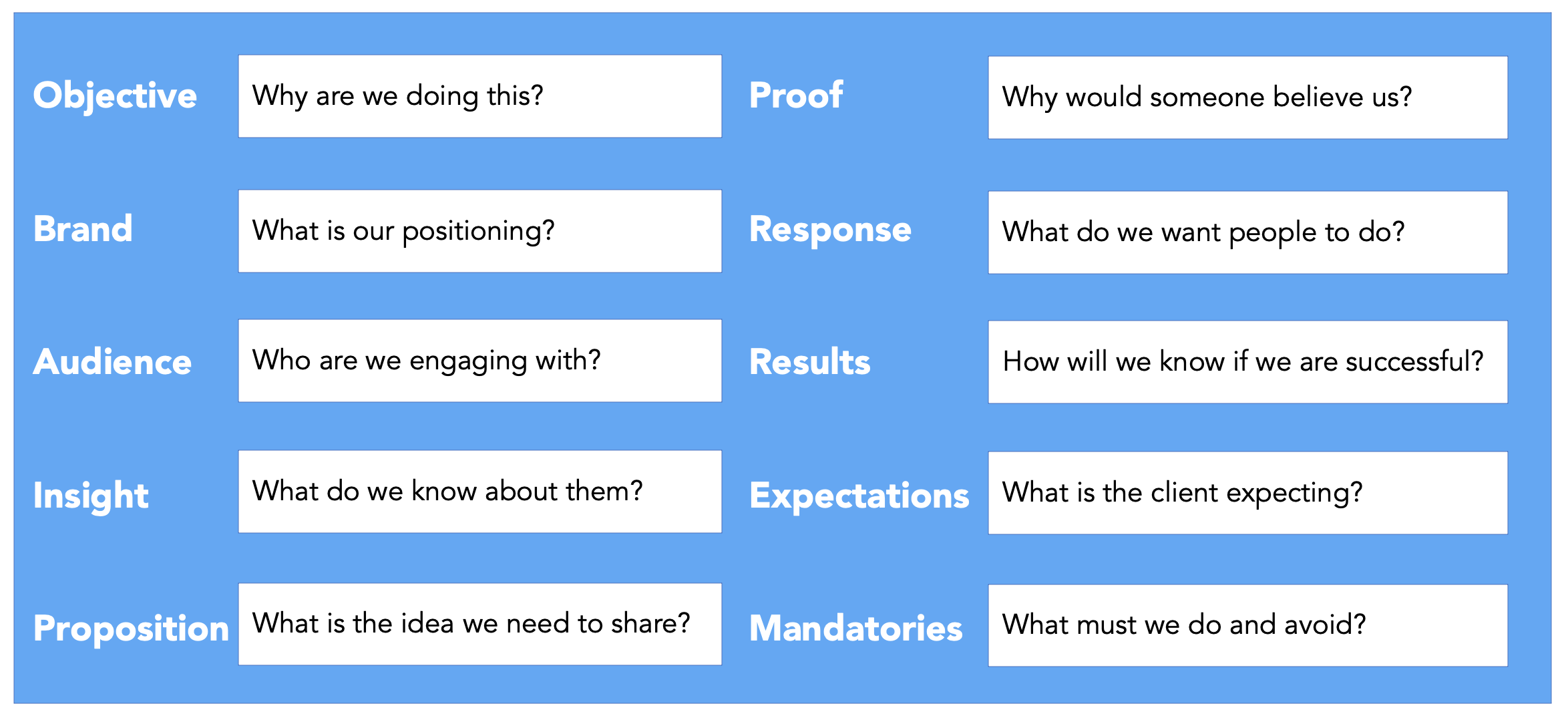Description
The purpose of a Creative Brief is to describe the problem to be solved through a new marketing initiative. It is a critical document used in briefing meetings and throughout creative development to ensure everyone is clear on the objective and nature of the initiative itself. Some creative brief formats are designed to be quite prescriptive while others are much more open. While the format of briefs vary, they all represent the bridge between strategic thinking and marketing execution. The creative brief should be used as a tool to inspire and guide creative development, as well as provide teams with a lens to provide feedback and evaluate performance.
Question
What is the problem to be solved and the expectations of how we solve it?
Steps
The first step in writing a creative brief is speaking directly with the stakeholder that is requesting the work. It is important to understand the ‘big picture’ and the reason why marketing is required in the first place.
Review your creative brief template and identify the gaps in your current knowledge. What further answers or insight do you need to effectively complete each section of the brief?
Conduct the necessary research to close these gaps. This may include reviewing existing brand, business, or segmentation documentation. New research into competitors or consumers may also be required.
Take your first pass at writing the creative brief based the information available. Make sure that your brief is actually brief by including the most salient details with the least amount of words.
Review your brief with your original stakeholder for their feedback and approval. Make any additional revisions, then schedule your meeting to ‘brief-in’ your new marketing initiative.
Considerations
Ensure that briefs are single-minded to focus attention, without any contradictions or ambiguity
Make sure that briefs are clear in terms of what success looks like and how work will be evaluated
Write your briefs in a way to inspire teams by providing an opportunity for creative problem solving
References
Steel, J. “Truth, Lies & Advertising: The Art of Account Planning”, John Wiley & Sons, 1998

